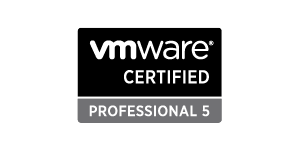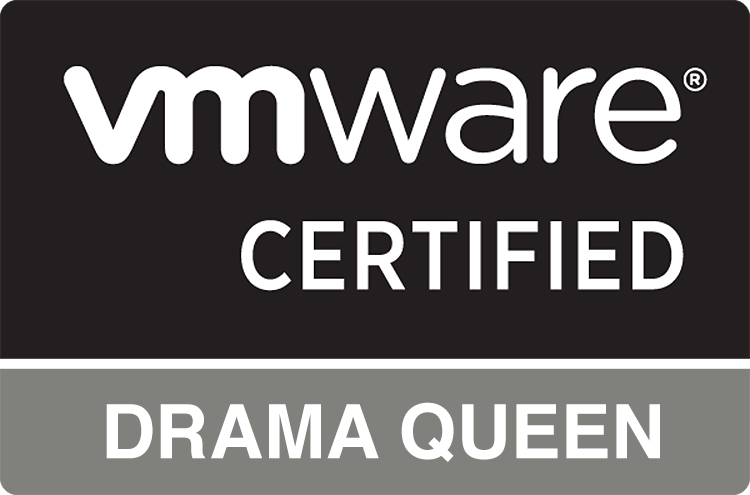I have a free Google Chromecast to give a way to one lucky winner. As part of being voted into the top 50 VMware & virtualization blogs I was lucky enough to win one for myself, and as an added bonus I get to give away one to one of my readers too!
To be able to find a worthy winner of it, I’ve decided to host a contest.
Since I do enjoy a bit of photography, and the site name is vNinja, the contest rules is as follows:
Eric Siebert has yet again pulled through, and organized his annual top VMware & virtualization blogs vote, and the results are now in. Congratulations to everyone involved, be it bloggers, podcasters or otherwise engaged in making this possible.
This year, Eric hosted a live Google Hangout session with John M. Troyer, David M. Davis and Rick Vanover where the top lists were revealed, be sure to check it out:
This rather tongue-in-cheek title, is a play on Maish recent VSAN - The Unspoken Truth post where he highlights what he thinks is one of the hidden “problems” with the current version of VSAN is it’s inherent non-blade compatibility and current lack of “rack based VSAN ready nodes”.
Of course, this is a reality; If you base your current infrastructure on blade servers, VSAN probably isn’t a good match as it stands today. Chances are that if you are currently running a blade-based datacenter, you have traditional external storage on the back end of that, and that you for quite some time will be running a form factor that VSAN simply isn’t designed for. I don’t disagree with Maish in that conclusion, not a bit.
 VMware has announced a Recertification Policy for it’s VMware Certified Professional program, effective as of March 10, 2014.
VMware has announced a Recertification Policy for it’s VMware Certified Professional program, effective as of March 10, 2014.
In short, it means that you are no longer a VCP(x) for life, but need to recertify every 2 years, unless you take a VCAP exam during the same period. If you do not upgrade your certification, your VCP status is revoked. For all the details, have a look at Recertification Policy: VMware Certified Professional.
 Once again, it’s time to vote for the top VMware & virtualization blogs. As usual Eric Siebert has opened up the floodgates and set up a voting system, and once again managed to create a lot of work for himself.
Once again, it’s time to vote for the top VMware & virtualization blogs. As usual Eric Siebert has opened up the floodgates and set up a voting system, and once again managed to create a lot of work for himself.
So, let’s all make it worth his while and get as many votes in as possible! There are a lot of blogs listed, this time there are over 300 in total.
Cast your vote, and get more information about the process:

The Dell PowerEdge VRTX shared infrastructure platform is interesting, and I’ve been lucky enough to be able to borrow one from Dell for testing purposes.
One of the things I wanted to test, was if it was possible to run VMware VSAN on it, even if the Shared PERC8 RAID controller it comes with is not on the VMware VSAN HCL, nor does it provide a method to do passthrough to present raw disks directly to the hosts.
William Lam posted “Why you should rename the default VSAN Datastore name” where he outlines why the default name for VSAN data stores should be changed. Of course, I completely agree with his views on this; Leaving it at the default might cause confusion down the line.
 I needed something to spruce up my desktop environment, and it seems that one of the more popular ways to do that is to display random quotes and such on your desktop. Instead of hooking up to an existing quotes database, I simply made my own.
I needed something to spruce up my desktop environment, and it seems that one of the more popular ways to do that is to display random quotes and such on your desktop. Instead of hooking up to an existing quotes database, I simply made my own.
I have collected a few VCDX related tips and quotes, primarily from the archive Duncan Epping put together of VCDX Tips from VCDX 001 John Arrasjid, but also from the “submissions” I got from VCDX? Give Me a Quote! If anyone else wants their quote/tip/hint added to the database, please let me know!
For a tiny project, I need some help from anyone who has completed (successfully or not) the VCDX process.
_All I’m asking is that you provide me with a single line quote about the VCDX process, or the VCDX program itself. _
Please send any quotes to me on Twitter, either as a mention or as a DM, your choice. Once I have a handful of quotes available, they will be made public for others to use as well…
About
vNinja.net is the online hub of Christian Mohn and Stine Elise Larsen.
The site primarily focuses on IT architecture and data center technologies, with a strong emphasis on virtualization and related topics.While the main content revolves around these areas, you'll also find a range of other subjects covered from time to time, reflecting the interests of authors.

